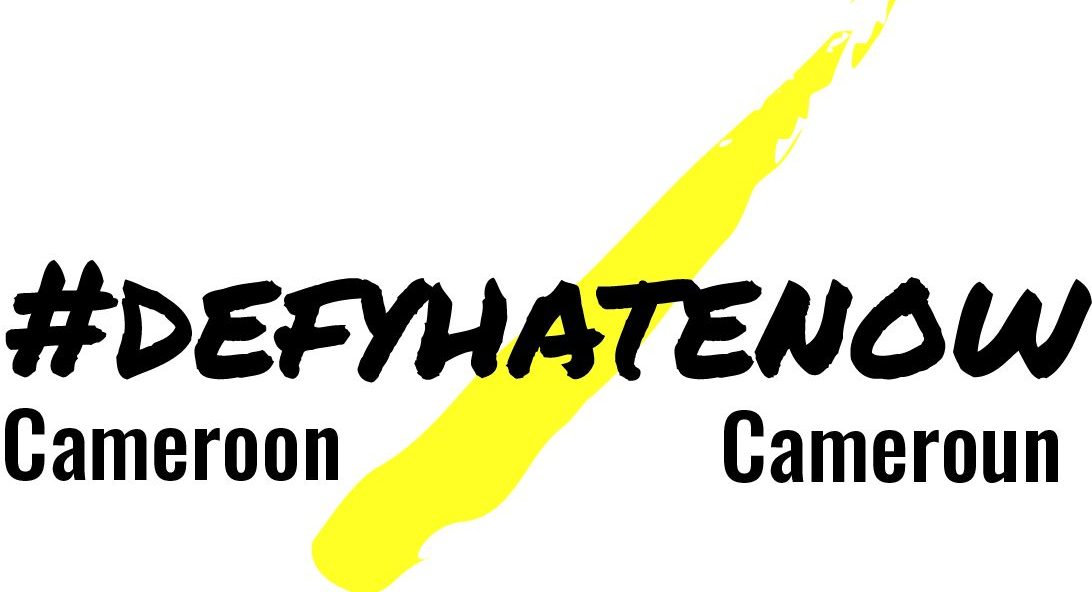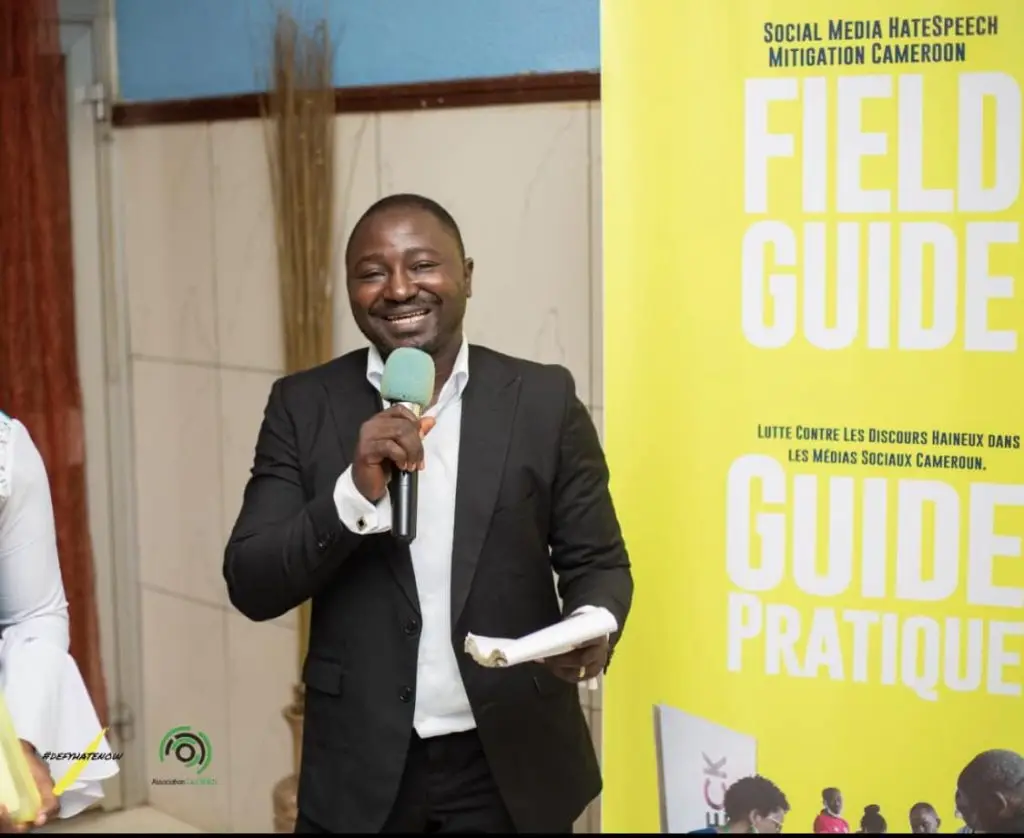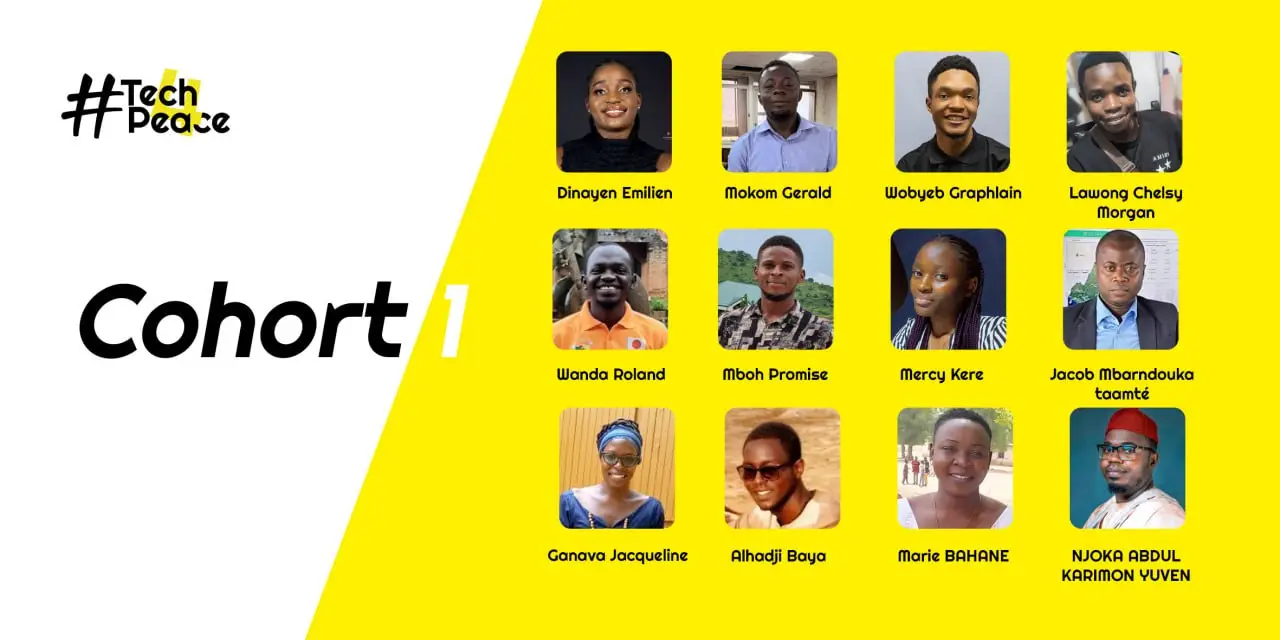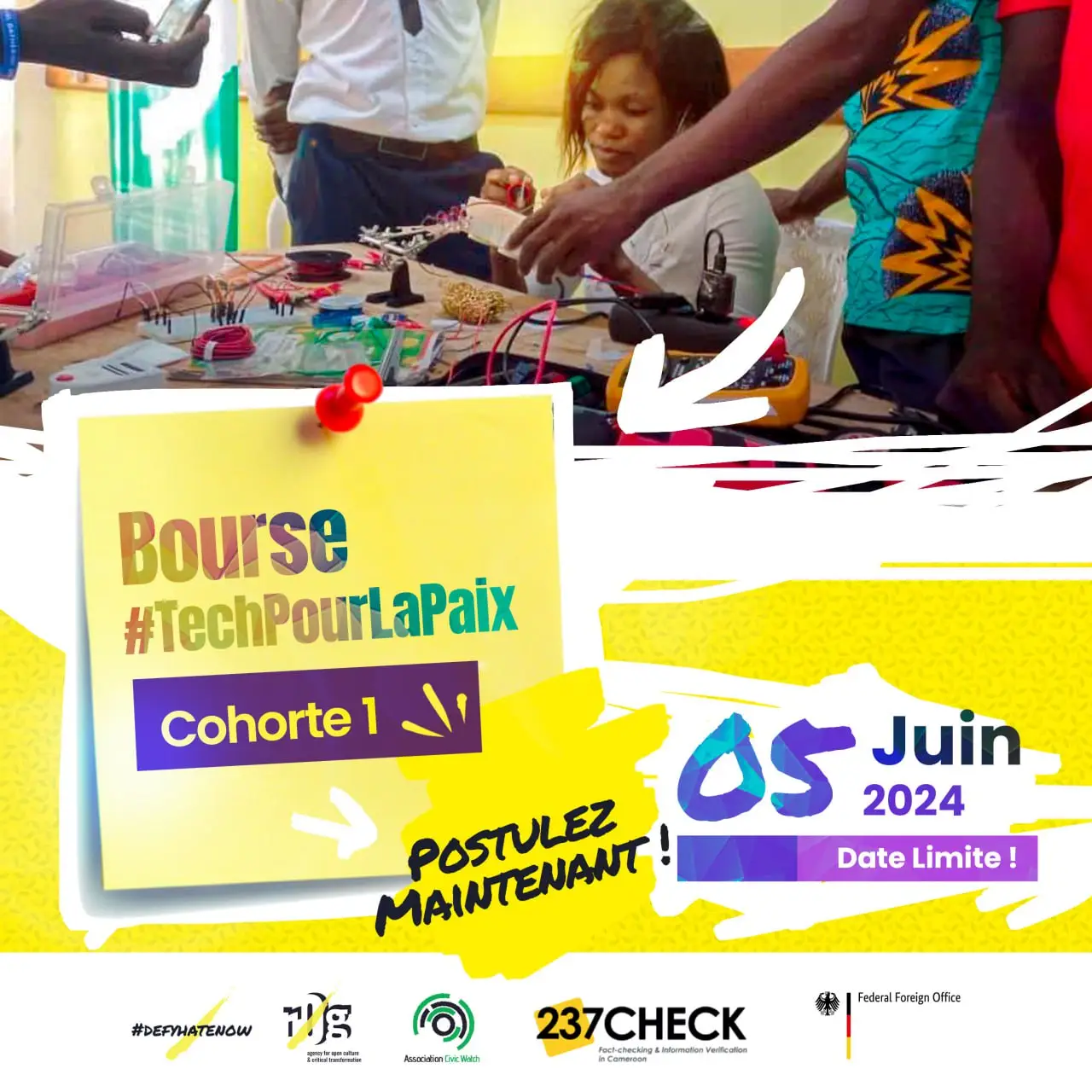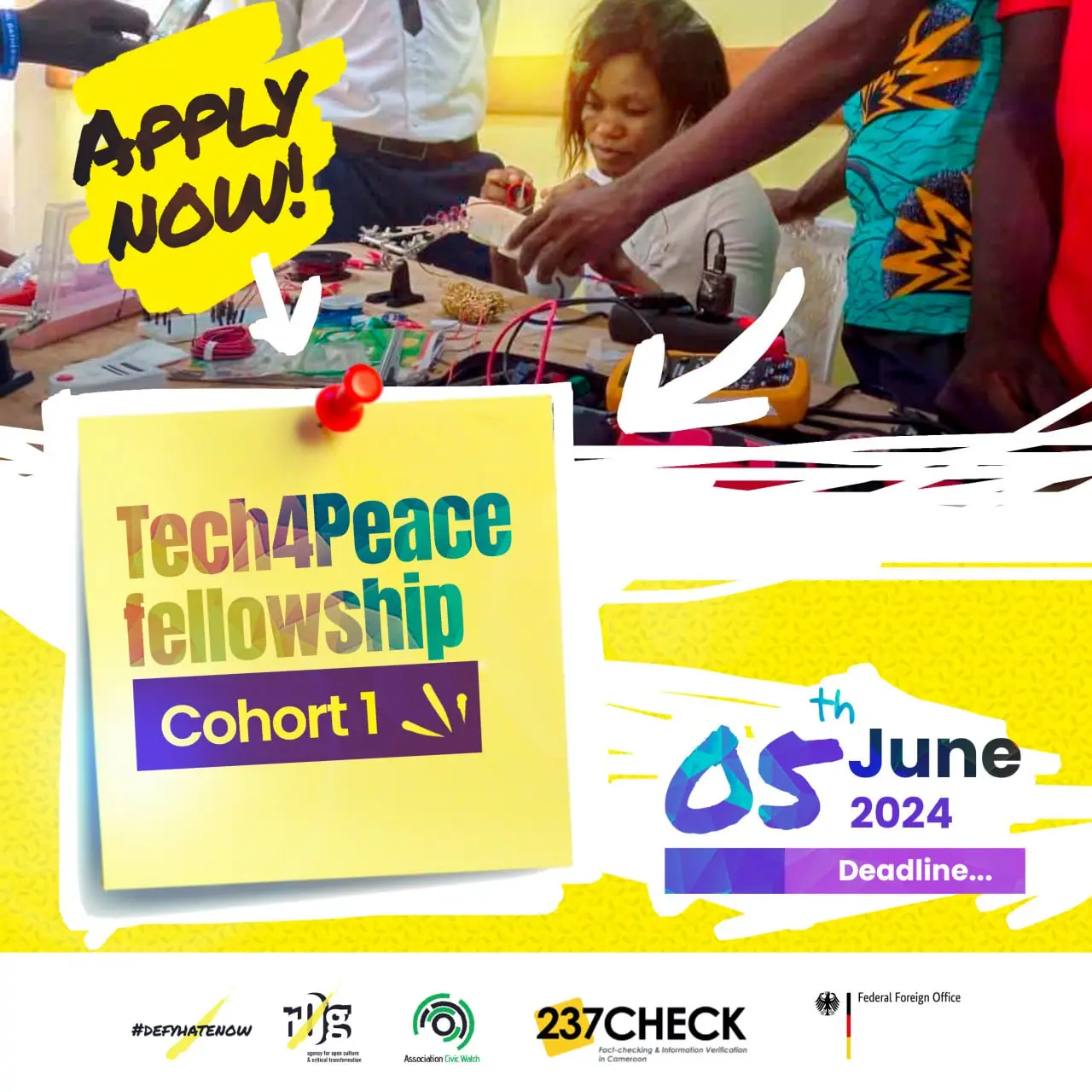Dr Kinang Derick Fai, Field Guide Implementation Lead, introduces the resource materials and guides users on how to get the best out of its rich content.
You are the Field Guide implementation lead in Cameroon. Can you tell our readers what the resource package is about and its use?
I will start by drawing our attention to the fact that the #defyhatenow Social Media Hatespeech Mitigation Field Guide is edition 2.0. It’s a document coined to be a peace-building tool that could be used to promote social cohesion and peace and could be that ideal document you would want to use when you want to engage in mitigating hate speech, incitement to violence, and mis/disinformation, or what we commonly call fake news. There are six chapter addressing specific issues, which content can help in preparing workshops, educational and community mobilisation activities.
You just mentioned that it is a conflict and hate speech mitigation tool, so why is it important? What role does it play in the context it was designed for?
The Field Guide is important because it was produced at a time when Cameroon is faced with a series of security challenges. We have the Boko Haram insurgency in the Far North Region, the Anglophone conflict in the two English-speaking Regions, the post-electoral crisis of 2018 and the insecurity in the East Region. The resource package presents itself as a peace-building tool that can be used to promote social cohesion and peace in Cameroon. Contextually the Field Guide has important content on issues related to information verification. We have a document that shows the correlation between social media and conflict as well as drawing our attention to the responsible use of social media. This is a document that attempts to contextualise hate speech in Cameroon and proposes strategies for its mitigation, if not to completely wipe out this societal scourge in our country. That is why it is called a Field Guide. It is reference package to civil society organisations when it comes to issues related to peace-building
Can you give us an overview of the implementation of the Field Guide? How many copies have been produced and what would it be utilised for?
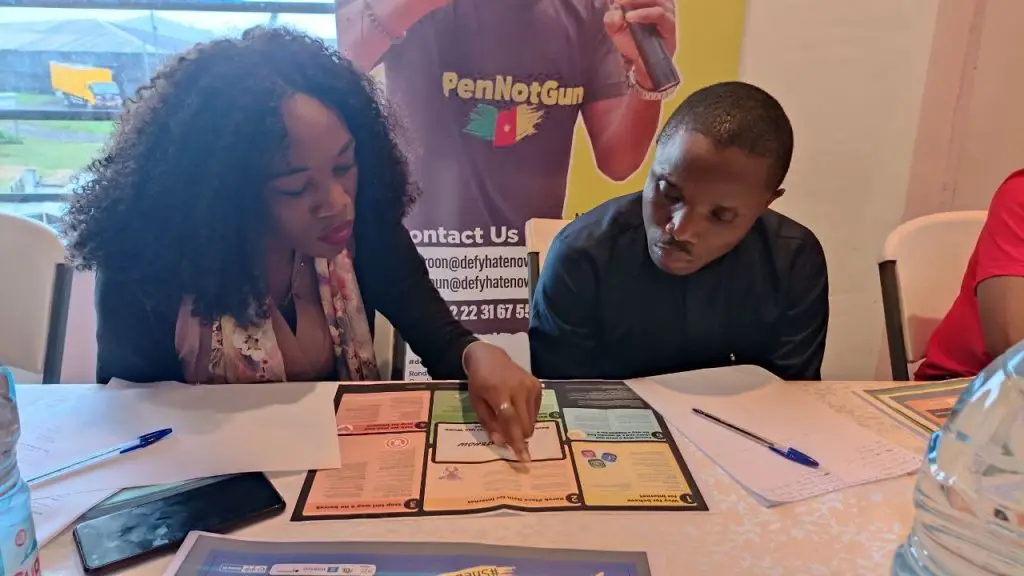
So far, we can talk of over 70 copies that were produced internally, both in English and French by the #defyhatenow initiative. The complete package has additional materials like the A4 posters that were produced in close to a thousand copies in French, English and Pidgin English. All of these materials produced in relation to the field guide are distributed freely to Cameroonians. We also have soft versions on our website for free download and use by anyone interested in promoting peace initiatives. From our standpoint of #defyhatenow, we have also been engaging even remote communities thanks to our implementation partners that have access to areas our team cannot reach directly. a lot in terms of ensuring its implementation. Before the coming of version 2.0, we had version 1.0, the first version of the Field Guide which was produced. We also received additional copies from the Ministry of Youth Affairs and Civic Education – MINJEC that supported us.
We receive constant feedback from partners, civil society, community and religious leaders who have been using the document in various peacebuilding activities. In 2023, we had a session in Douala with civil society and community leaders exchanging on how the Field Guide could be properly used on the field as a peacebuilding tool in different parts of Cameroon. During the follow-up to this particular workshop, most of the participants who portrayed were outstanding were accompanied by the #defyhatenow initiative to run activities in their different communities. For example, a community-based organisation, Better Future operating in Nkongsamba in the Littoral Region, has been using the field guide in engaging community and religious leaders. Administrative authorities like the Divisional Officer and Delegate of ministries have become a part and parcel of this struggle, working to mitigate hate speech, incitement to violence and disinformation locally.
We also introduced the Field Guide in the East Region through a locally-based partner Association Pro Social. We had meetings in Garoua-Boulai, grouping religious and traditional authorities alongside displaced populations that had resettled in this area. Visiting the refugee camp, we drew the attention of the refugees and the host community on the need to practice some degree of tolerance and ensure social cohesion among the population. We led activities in schools using the Field Guide posters and discussion cards, especially in the conflict zones. We engaged the Presbyterian Church in Cameroon – PCC Peace Office in Ngoketunja, North West Region by creating clubs in secondary schools. This is a community that is hard-hit by the on-going Anglophone conflict. We are happy to see that, thanks to the use of the resource package, peacebuilding messages have been spread in these remote communities. These peace clubs have also been created in other places like Yaounde, Buea, Limbe, Douala, Bafoussam, Dschang and Tiko. Apart from that, we also had sessions in the Northern Regions, particularly the regional headquarters, Ngaoundere, Maroua, and Garoua all combined. The communities we reach have received and owned the content of the Field Guide and use it daily to improve the work of organisations involved in peacebuilding.
Apart from the English language; we also have activities with the Association of Broadcasters in Pidgin English. This group of media professionals operate in remote communities using local languages to reach every home. Community radios help to bridge the community gap in rural areas, thus the need to build the capacities of the message bearers for more results. The Association members had a series of workshops where they translated the content to Pidgin English by contextualising the message to suit their audiences. Today, we see them using the content in their radio to educate the masses on the dangers of hatespeech; while proposing ways to counter them effectively.
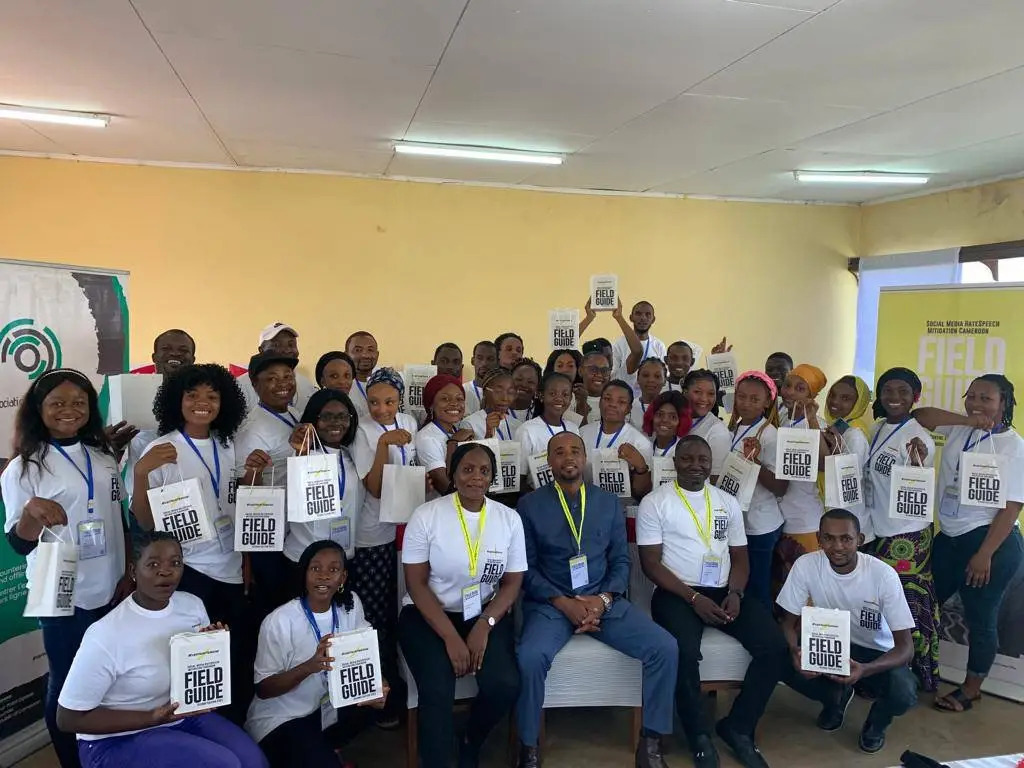
Can you please share the success stories or positive outcomes of its implementation?
I think several success stories could be brought to the limelight to understand how important the implementation of the Field Guide has been. For example, during the session with the Pidgin English journalists, we had testimonies that were coming from some of these journalists, who have gained understanding of issues relating to incitement to violence and hate speech. Thanks to the knowledge acquired, they have changed the way they anchor programs on radio and TV, especially contents addressed to the Anglophone audience in a place like Douala IV. The economic capital is one of the largest host towns of internally displaced persons from the crisis-hit North West and South West Regions are conflict-sensitive to avoid fuelling the crisis.
The posters have messages and images that make it easier to create programs that address the root causes of conflict while proposing possible solutions. Another testimony came from Kumba in the South West Region, mass communication programs in English Pidgin were fast dying. Following the workshop on the translation of the Field Guide, the participants received materials to enable them develop debates topics for programs and magazines. One of our implementation partners shared an experience where the A4 game was used to put an end to diplomatic tension between Cameroonians and Chadians during a peace-building workshop. By engaging both parties to place the #HateFreeCameroon game, their attention was diverted from the quarrel that had broken out. During sensitisation sessions on radio, for example on the national station, our partners have used the resource package to engage journalists and their audiences during prime programs.
When you have such feedback from the community, this gives you the push to want to do more. Most of our community relays not only use this document for their activities, but also draw inspiration for presentations they make in and out of Cameroon. We have seen cases where the Field Guide has served for discussions around peacebuilding, conflict transformation and community engagement in major conferences abroad. When you get testimonies like this coming from those who have been using the document, you only want to do more because you feel like it is a peace-building tool.
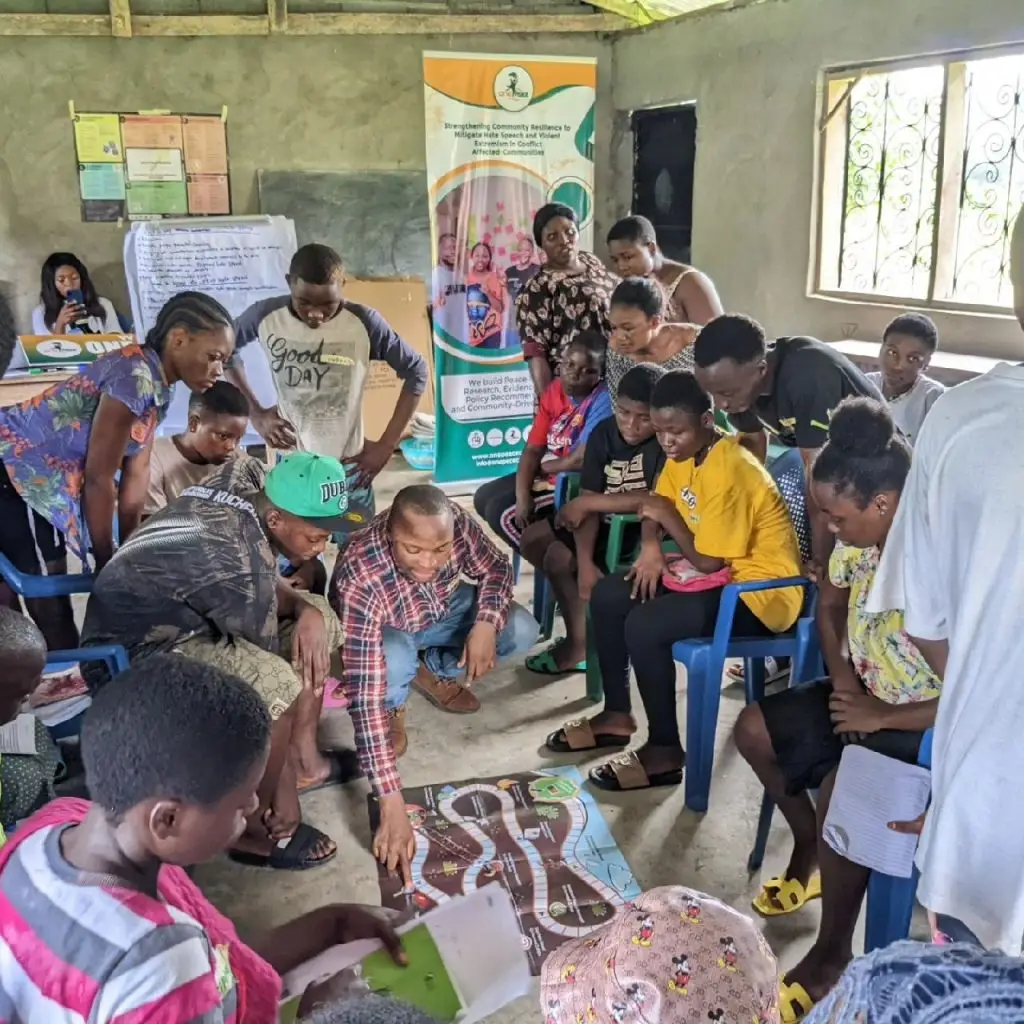
What are some of the challenges or difficulties encountered during its implementation and how were they addressed?
In reality, one of our major and most difficult tasks has always been the tracking of the Field Guide’s use in the different parts of the country. It has always been our desire to pin-point every user of the #defyhatenow Hate Speech Mitigation Field Guide. But unfortunately, taking into consideration the remote nature of some parts of the country and inaccessibility, it becomes very difficult to do so. At times we are unable to ensure a proper tracking like who is doing it? What type of activities do they run with it? Where are they located? How often do they use it? And what impact or results have they derived from its use?
So far, that has been one of our major challenges, but we are struggling to overcome them. For example, we have a sheet where we record the contact person that takes the document. However, should they give it out to another person or move it to a different location, we might not be able to know or trace it. We have been working to mitigate these shortcomings by creating groups where partners can update us of their activities and the locations. We also follow-up through calls in order to ensure the effective use of the resource packages in the communities where they have been free distributed for use.
Another major challenge has always been limited resources, because ideally, we would have loved to have a hard copy shared to everyone who is interested in peacebuilding. We have devised a way to overcome this by making partners know that they can give out their copies to other organisations within the same geographical location for use. Insufficient finances to fund all projects conceived in relation to the Field Guide has made us to rather build the capacities of community-based organisations, and then show them ways to incorporate the content in the daily work. Thus they must not have what we can call a “Field Guide activity” rather they can run activities according to their mandate and use the resource package as a working document for the sessions.
We also have some difficulties especially in conflict areas like the North West and South West Regions. There are certain contextual contents in the Field Guide that cannot be used in certain parts of these Regions. Community-based Organisations in charge of the implementation of the Field Guide gave us feedback that they cannot operate freely in places like Kumbo, Akwaya, Mamfe and other areas, which makes it very difficult for us to ensure proper implementation. We realised that some of the content and message do not go down well with the belligerents in the two English-speaking Regions.
Recently a Pidgin English version of the Field Guide posters, why the addition?

The Field Guide has gained relevance because it was produced at what many have described as the “appropriate time”. We are living in a context of insecurity, and we can only stress more on pidgin English, because when you take into consideration, for example, the Anglophone crisis that is ravaging the North West and South West Regions. This gives us a clear understanding that carrying out peacebuilding activities in these zones require the use of the right language. In the rural communities hit by the crisis, Pidgin is widely spoken which makes it necessary to pass the message across. Also, it is easier to translate or paraphrase the contents in vernacular compared to doing it in the English language. A majority of the population speak or understand Pidgin English, especially the elderly group in villages. They are equally the ones who follow community radios religiously.
To whom does the Field Guide belong, giving that is was entirely produced by #defyhatenow with funding from the German Federal Foreign Office?
We would say the Field Guide belongs to Cameroonians as a whole and most especially to all lovers of peace. They are the owners of the resource package, which ought to serve as a guide to them in their strive for peace daily. As the project lead, Stephen Kovats rightly puts it, it serves no purpose to produce material that would not be useful or implemented. Bringing the Field Guide as a working tool to support local peacebuilding initiatives simply explains why the guide belongs to the community. That is the reason why the A4 posters and flash cards were produced so that communities with no internet or electricity can still use the content for activities. Our overall goal is to make the resource package available to everyone who loves peace and wants to engage in peacebuilding. All the education materials that #defyhatenow produces are open-source and available for free download on our website. Feel free to read and download the English, French or Pidgin English versions anytime.

Interviewed by Nadine Bindey, Communication Intern
